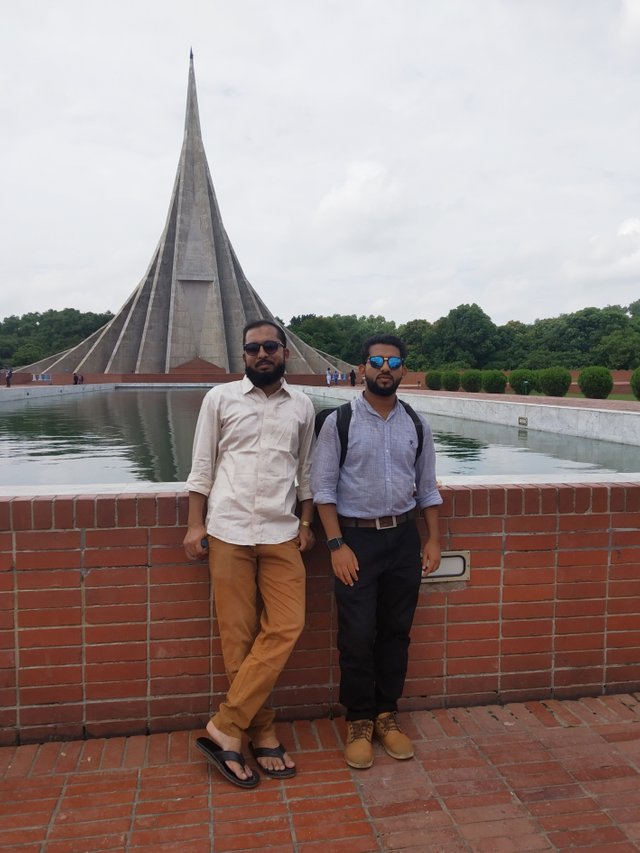
The National Memorial is an eternal symbol of the nation's homage to the heroic martyrs who sacrificed their lives in the great liberation war of 1971. A memorial complex has been set up on a 44-hectare site in Savar upazila, 35 km northwest of Dhaka, the capital of Bangladesh. In December 1971, a memorial was erected at Savar commemorating the bloody battle of Savar, the final victory of the freedom fighters, their heroism and self-sacrifice.
Architect Syed Moinul Hossain's design was selected from the 56 best designs. Shortly after 1982, the main structure of the memorial, the artificial lake and the garden were completed.
The main structure of the monument consists of seven pairs of triangular walls. The walls are arranged in this order from small to large. The middle wall is the shortest in length but the longest in height. At the highest point the monument is 150 feet high.
The monument is viewed differently from different angles. Architect Moinul Hossain made the main structure of the monument concrete and other structures of the complex made of red brick. This difference is to preserve the seriousness and uniqueness of the original building. This indicates the unique development of freedom in the red land of blood.
The entire complex has artificial ponds, gardens and mass graves. In 1971, a great battle was fought by the freedom fighters against the Pakistani aggressors in Savar. Many freedom fighters were martyred in that war. In this final battle the victory of Bangladesh and the defeat of Pakistan were determined. Earlier, the Pakistani army captured many Bengalis from villages in Savar area and brought them to the camp. They were killed after being tortured.Numerous villagers were killed by brush fire and left on low ground or buried. Slaughterhouses and mass graves were discovered in this area after the war. These mass graves are located in the memorial complex. There is a pond in front of the main structure of the National Memorial. Here the main structure of the National Memorial and the national flag are reflected. There are innumerable water lily flowers in this water body. National flower of Bangladesh.
There is no entrance fee to enter the Savar National Memorial. It is open daily from 8 am to 6 pm.
Why seven pillars in the memorial?
The memorial consists of seven pairs of triangles. The seven pairs of walls of the National Memorial indicate seven different stages of the independence movement. The stages are:
- Language movement of 1952.
- United Front election of 1954.
- The 1956 constitutional movement.
- Education movement of 1962.
- The six-point movement of 1966. .
The mass uprising of 1969 and . The great liberation war of 1971. The monument has been constructed considering these seven incidents as the culmination of the independence movement.
How to goঃ
There is a BRTC bus service from Dhaka to the memorial directly. Which goes from Motijheel-Gulistan to Shahbagh, Farmgate, Asadgate, Shyamoli, Gabtali, Savar to the memorial. Apart from Motijheel and Gulistan, Hanif, Nandan Super Bus and Greenway bus services run directly to Nabinagar. Besides, Titas Paribahan, which left Mirpur No. 12, went to the memorial via Mirpur 10, Mirpur 1, Technical, Gabtali, Savar.